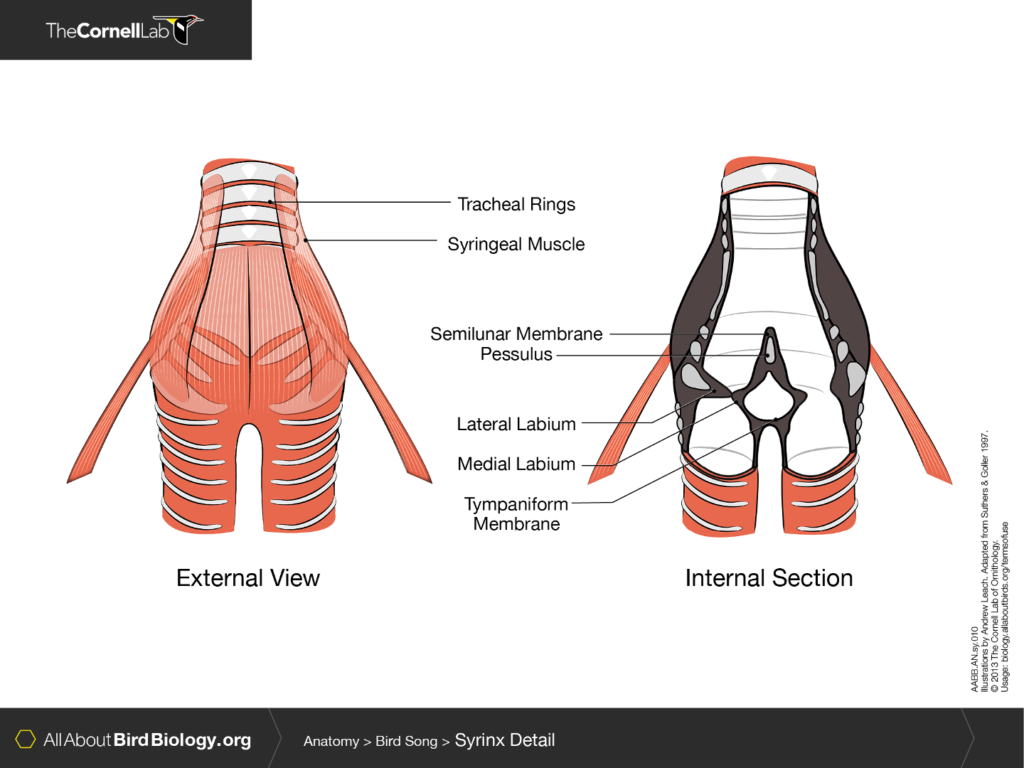Vocal structures in birds such as the size and shape of the syrinx (the primary sound-producing organ of birds) and labia (the sound-producing membranes in the lateral wall of each half of the syrinx), the length of the trachea, and the size and shape of the bill can affect song characteristics such as pitch, note length, tonal qualities, and song rate.

Until now, few have sought to untangle the effects of all of the various vocal structures on sound characteristics. Researchers from San Diego State University, Cornell University, and Louisiana State University examined 11 different song characteristics from audio specimens in the Macaulay Library and Xeno-canto alongside physical features in birds in the tanager family (Thraupidae) to begin to better understand the factors that affect the evolution of song characteristics.


But the researchers point out that it is the combination of features such as bill size and shape with body size that helped them identify how physical features might affect the evolution of different song characteristics across an entire family of birds. Their research continues to build upon our understanding of the evolution of bird song, which would not have been possible without recordings in digital archives such as the Macaulay Library.
Demery, A. C., K. J. Burns, and N. A. Mason. (2021). Bill size, bill shape, and body size constrain bird song evolution on a macroevolutionary scale. Ornithology 138:1-11.


